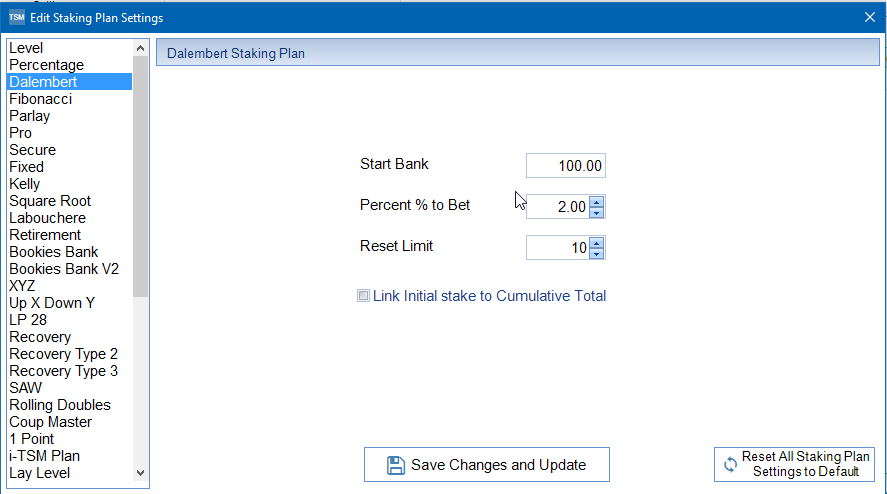D'alembert Staking Plan
The D’Alembert Staking Plan, also known as the Pyramid System, was developed by French mathematician Jean Le Rond D’Alembert in the 18th century. This strategy is based on the ‘Law of Equilibrium,’ which suggests that over a long series of events, the number of wins and losses will balance out.
How the D’Alembert Staking Plan Works:
The plan involves adjusting your stake by one unit after each bet:
- After a Loss: Increase your stake by one unit.
- After a Win: Decrease your stake by one unit.
The goal is to return to your original stake size, securing a profit of at least one unit each time you complete a sequence.
Example:
Assuming a unit size of £10 and even odds (2.0):
- First Bet: £10
- If you lose, increase the next stake by one unit (£10 + £10 = £20).
- Second Bet: £20
- If you win, decrease the next stake by one unit (£20 – £10 = £10).
- Third Bet: £10
- If you lose, increase the next stake by one unit (£10 + £10 = £20).
- Fourth Bet: £20
- If you win, decrease the next stake by one unit (£20 – £10 = £10).
This pattern continues, with stakes increasing by one unit after each loss and decreasing by one unit after each win.
Considerations:
While the D’Alembert Staking Plan aims to capitalise on the balance between wins and losses, it’s important to set limits to prevent excessive losses. Without proper constraints, this strategy can lead to significant financial risk, especially during prolonged losing streaks.
In The Staking Machine (TSM), there’s an option to adjust your starting stake at the beginning of a new sequence relative to the cumulative total of your betting bank, allowing for more controlled staking.

